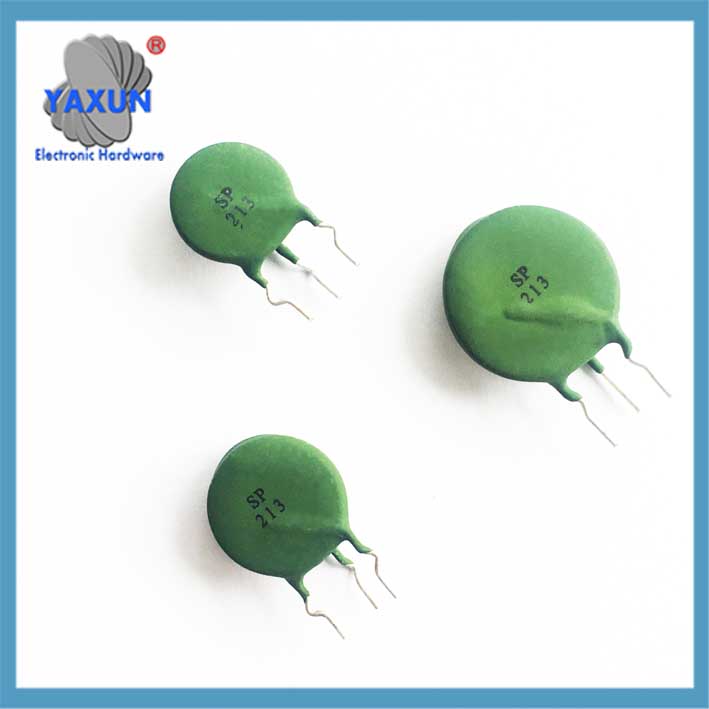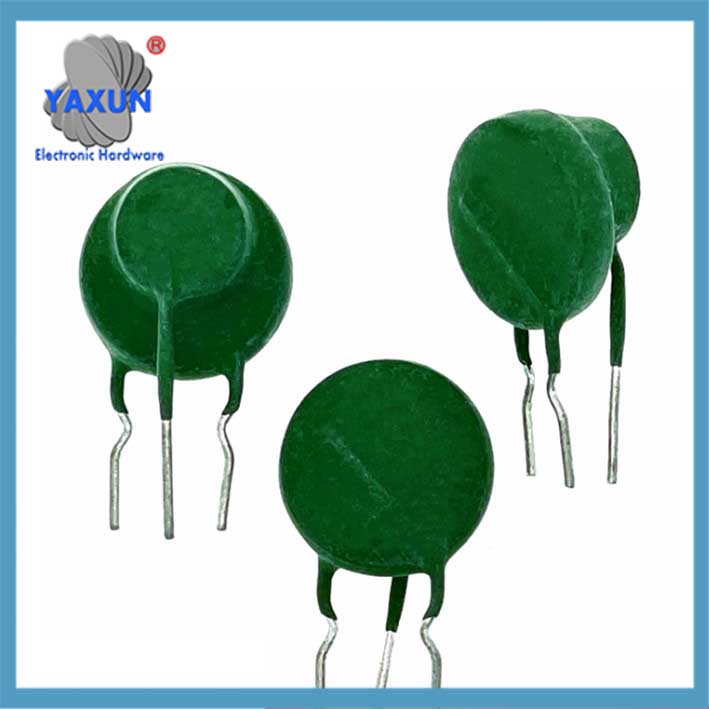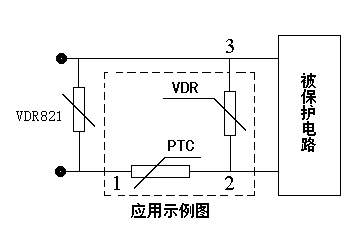Categorías de Producto
- fusible térmico 32
- fusibles de montaje en superficie 12
- termistor 36
- Portafusibles de montaje en PCB 27
- Arnés de cableado 6
- Portafusibles de cuchilla 17
- termostato 50
- Fusible eléctrico 24
- Sensor de temperatura automotriz 7
- Disyuntor térmico 22
- Portafusibles 36
- Sensor de temperatura 75
- Interruptor térmico 68
- Fusible del coche 20
- Fusibles atornillados 8
Etiquetas de productos
Termistor PTC compuesto para transformadores, Potencia de conmutación
Un termistor PTC compuesto utiliza una combinación térmica acoplada, ajustado y encapsulando un varistor VDR y un termistor PTC. Se utiliza principalmente en el cambio de alimentación y los circuitos primarios del transformador en medidores de potencia y otras fuentes de alimentación, proporcionando protección integral de corriente y voltaje.
A composite PTC thermistor is an electronic component that combines positive temperature coefficient (PTC) characteristics with overvoltage protection, primarily used for dual overcurrent and overvoltage protection. Un termistor PTC compuesto utiliza una combinación térmica acoplada, ajustado y encapsulando un varistor VDR y un termistor PTC. Se utiliza principalmente en el cambio de alimentación y los circuitos primarios del transformador en medidores de potencia y otras fuentes de alimentación, proporcionando protección integral de corriente y voltaje. This solves the difficulties associated with using a single PTC thermistor with transformers. Instruments and equipment protected by a PTC thermistor may not function properly under overvoltage or overcurrent conditions, and low-temperature instruments may not be protected by the PTC when abnormalities occur.
The following is an analysis of its core features and applications:
I. Structure and Principle
Material Composition: Typically made from a polyolefin resin, polyethylene, or epoxy resin matrix, conductive particles such as carbon black and vanadium oxide are incorporated. A temperatura ambiente, the conductive particles form continuous conductive chains, resulting in low resistivity. When the temperature rises to the polymer melting point, the matrix expands, breaking the conductive chains and causing a sudden increase in resistivity (PTC effect). Composite Design: Some models integrate a PTC thermistor and a varistor (VDR) into a single package, achieving dual overcurrent and overvoltage protection through thermal coupling. Por ejemplo, during an overvoltage event, the varistor absorbs energy and generates heat, triggering a jump in the PTC’s resistance, limiting current and reducing voltage by 4%.
II. Performance Characteristics
RISE-TO-RESISTANCE RATIO: The resistance can vary by 5-10 orders of magnitude within a narrow temperature range, making it suitable as a thermal switch element.
RESPONSIBILITY: After actuation, it takes a long time to cool down before returning to its initial state, resulting in a slow response.
SELF-RECOVERY: Automatically returns to a low-resistance state after the fault is resolved, eliminating the need for replacement.
III. Aplicaciones típicas
Home Appliances and Industrial: Used for overcurrent protection in equipment such as electric water heaters, motores, y transformadores.
Power Meters: Provides combined overvoltage and overcurrent protection in smart meters and switching power supplies.
Electrónica automotriz: Used in temperature monitoring applications such as engine control and air conditioning systems.
When a varistor absorbs large amounts of energy, se calentará. Due to thermal coupling, the temperature of the PTC thermistor also rises. Además, the thermistor itself heats up due to the increased current. When the temperature reaches the PTC thermistor’s switching temperature, its resistance jumps, and the current decreases sharply. Simultaneously, the voltage drop across the thermistor increases significantly, reducing the voltage across the varistor and allowing only a small leakage current to flow. This reduces the voltage of the protected circuit to within the normal operating voltage range, allowing the power meter to operate normally.
IV. Selection Parameters
The following parameters should be considered during selection:
Operating current (It) and non-operating current (yo);
Curie temperature (Tc, typically 115±7°C);
Varistor voltage (V) and maximum operating voltage (Vmáx).
Common models of composite thermistors
| Modelo | Curie | Actuating | Non-Actuating | Varisor | Clasificación | Dimensiones | |
| Temperatura | Actual | Actual | Voltaje | Maximum Operating | |||
| (25℃) | (60℃) | (25℃) | Voltaje | ||||
| Tc(℃) | It(mamá) | yo(mamá) | V(V) | Vmáx(V) | Dmax | Hmax | |
| SPMZB-10S300-500RM/14D900 | 115±7 | 250 | 70 | 90 | 65 | 16 | 8 |
| SPMZB-08S300-600RM/14D121 | 115±7 | 200 | 60 | 120 | 65 | 16 | 8 |
| SPMZB-08S400-800RM/14D181 | 115±7 | 200 | 50 | 180 | 120 | 16 | 8 |
| SPMZB-10S300-500RM/14D181 | 115±7 | 250 | 70 | 180 | 120 | 16 | 8 |
| SPMZB-06S900-161RM/10D391 | 115±7 | 150 | 30 | 390 | 265 | 12 | 8 |
| SPMZB-06S151-251RM/10D391 | 115±7 | 120 | 25 | 390 | 265 | 12 | 8 |
| SPMZB-08S400-800RM/12D391 | 115±7 | 200 | 50 | 390 | 265 | 14 | 8 |
| SPMZB-08S600-121RM/12D391 | 115±7 | 180 | 40 | 390 | 265 | 14 | 8 |
| SPMZB-08S600-121RM/14D391 | 115±7 | 180 | 40 | 390 | 265 | 16 | 8 |
| SPMZB-08S800-161RM/14D391 | 115±7 | 160 | 35 | 390 | 265 | 16 | 8 |
| SPMZB-10S300-500RM/14D391 | 115±7 | 250 | 90 | 390 | 265 | 16 | 10 |
| SPMZB-10S400-800RM/14D391 | 115±7 | 220 | 70 | 390 | 265 | 16 | 10 |
| SPMZB-10S400-800RM/14D471 | 115±7 | 220 | 70 | 470 | 330 | 16 | 10 |
| SPMZB-16S200-300RM/20D391 | 115±7 | 450 | 130 | 390 | 265 | 22 | 10 |
Contáctenos
Esperando tu email, le responderemos dentro de 12 horas con la valiosa información que necesitabas.
 English
English Afrikaans
Afrikaans العربية
العربية বাংলা
বাংলা bosanski jezik
bosanski jezik Български
Български Català
Català 粤语
粤语 中文(简体)
中文(简体) 中文(漢字)
中文(漢字) Hrvatski
Hrvatski Čeština
Čeština Nederlands
Nederlands Eesti keel
Eesti keel Suomi
Suomi Français
Français Deutsch
Deutsch Ελληνικά
Ελληνικά हिन्दी; हिंदी
हिन्दी; हिंदी Magyar
Magyar Bahasa Indonesia
Bahasa Indonesia Italiano
Italiano 日本語
日本語 한국어
한국어 Latviešu valoda
Latviešu valoda Lietuvių kalba
Lietuvių kalba македонски јазик
македонски јазик Bahasa Melayu
Bahasa Melayu Norsk
Norsk پارسی
پارسی Polski
Polski Português
Português Română
Română Русский
Русский Cрпски језик
Cрпски језик Slovenčina
Slovenčina Slovenščina
Slovenščina Español
Español Svenska
Svenska ภาษาไทย
ภาษาไทย Türkçe
Türkçe Українська
Українська اردو
اردو Tiếng Việt
Tiếng Việt



